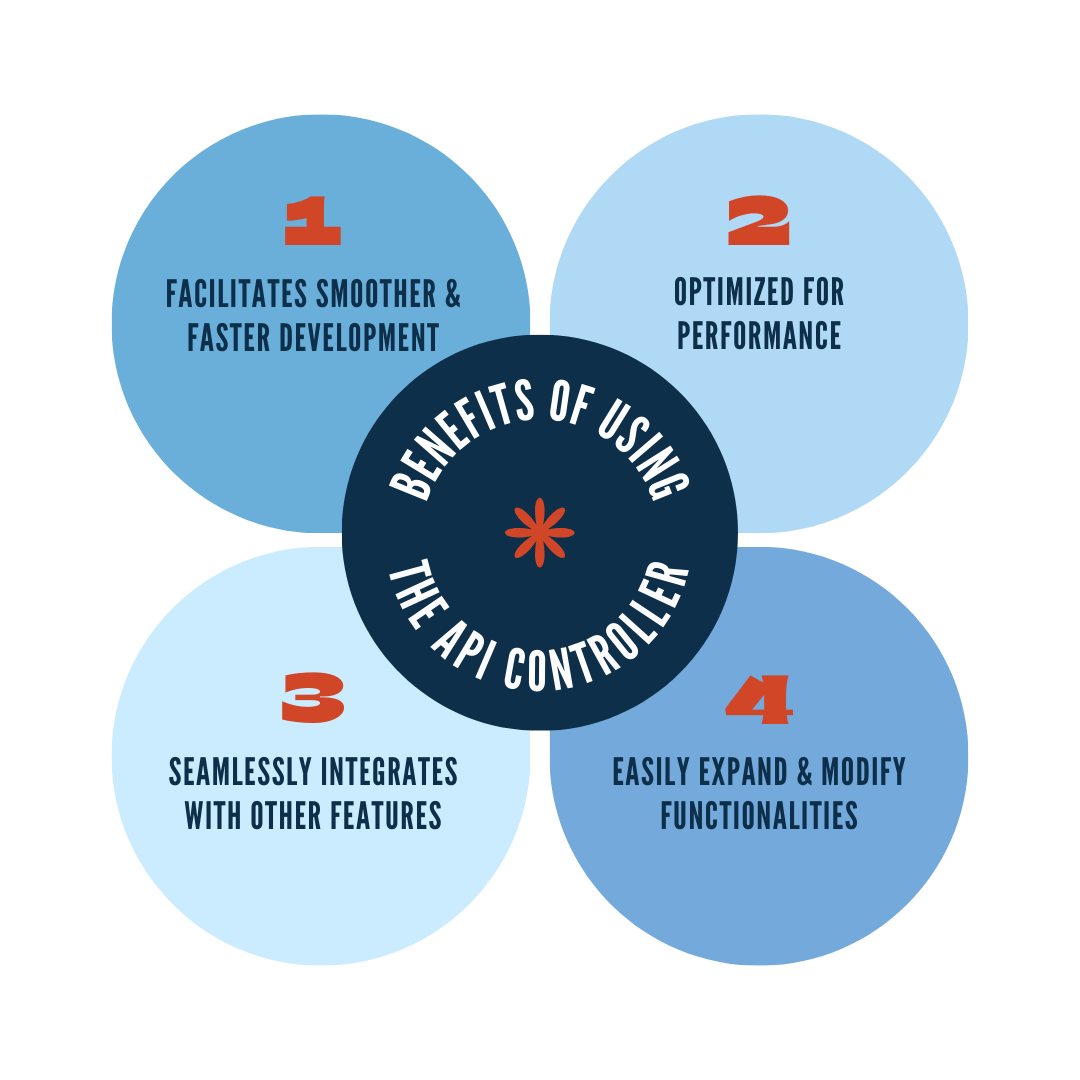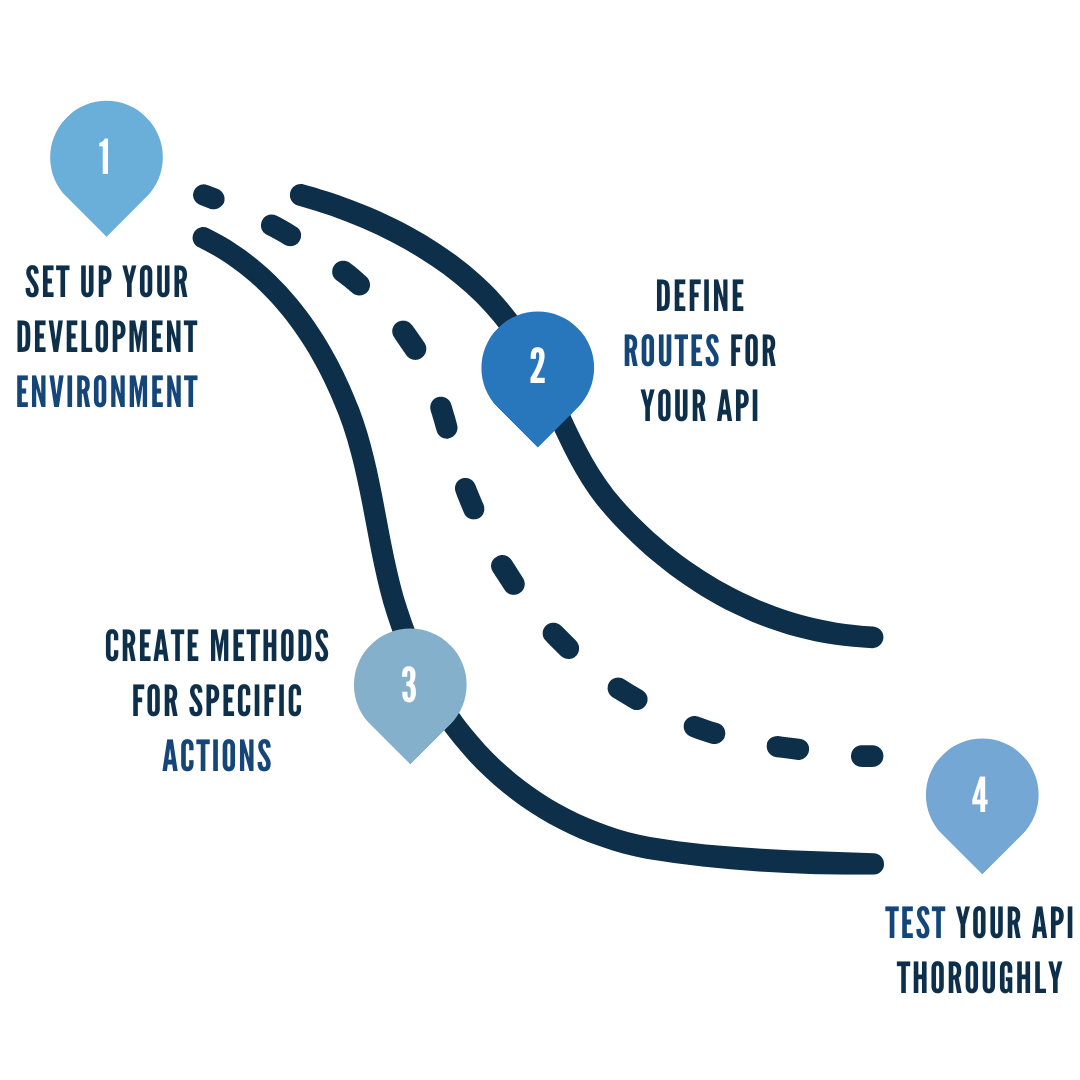Umbraco, which is a leading ASP.NET CMS, offers developers a broad range of tools to build their custom web solutions - one of those tools that we are going to jump into in this article, is Umbraco’s API Controller.
First off, what is an API?
An API, or Application Programming Interface, is a set of rules and protocols for building and interacting with software applications. It defines how different software programs can communicate and interact with each other. Here's a brief outline:
- Definition: An API is like a contract between different software programs, outlining how they can interact with each other. It specifies the methods and data formats for requests and responses.
- Purpose: APIs are used to enable the integration of different software systems, allowing them to communicate and share data and functionality seamlessly.
- Usage: Developers use APIs to access the functionality or data of an external service or software component. For example, a weather application might use an API to fetch weather data from a remote server.
- Types: There are different types of APIs, such as web APIs, operating system APIs, database APIs, etc., each serving a specific purpose.
- Benefits: APIs simplify software development and innovation by allowing developers to leverage existing services or platforms, thus reducing the time and cost of development.
In essence, APIs are crucial in modern software development, acting as building blocks that allow for efficient integration and functionality expansion across different software systems.
The Umbraco API Controller is an ASP.NET WebApi controller that is used for creating REST (Representational State Transfer) services and allows streamlined routing between applications. One of the things we love about Umbraco is how easy it makes it to create API routes. These controllers are auto-routed which means that you don't have to add/create your own routes for these controllers to work, making the development process a whole lot smoother! You don’t really have to think about it, you just have your controller inherit UmbracoApiController and Umbraco manages the routing for you.
As the digital needs of businesses become ever more complex, tools like Umbraco’s API Controller can be a powerful tool in connecting data and platforms to supercharge your customers' digital experience.
This article will provide an in-depth exploration of the API Controller, its benefits, and how to effectively utilize it for web development.
Understanding the API Controller in Umbraco
Umbraco’s API Controller is a powerful tool designed to give web developers greater power and control in creating dynamic and interactive web applications. It's not just about facilitating the creation of custom web services; it's about doing so in an environment tailored for Umbraco, ensuring that developers can leverage all the platform's strengths while building their custom solutions.
Ease of Setup
One of the standout features of the API Controller is its user-friendly nature. Developers don't need to wade through complex configurations or setups. The intuitive design and clear documentation mean that even those new to Umbraco can quickly grasp how it works. This ease of setup ensures that projects move from the planning phase to the execution phase swiftly, reducing development time. For instance, a developer tasked with creating a custom content retrieval service for a blog can quickly set up the necessary endpoints using the API Controller, building on the foundation of the traditional ASP.NET Web API.
Integrated Security
The API Controller is built with this in mind. It comes equipped with built-in authentication and authorization mechanisms, ensuring that the data and functionalities it powers are protected from unauthorized access and potential threats. This means that if a business has a members-only section on their website, the API Controller can ensure that only authenticated members can access certain data or services, keeping sensitive information secure.
Flexibility
The API Controller is designed to be versatile, capable of handling a wide range of tasks. Whether it's fetching specific content based on user preferences, sending data to external platforms, or integrating with third-party services like CRMs or payment gateways, the API Controller is versatile enough to handle it. An e-commerce site, for example, might need to integrate with multiple payment gateways and also gather real-time inventory data, and the API Controller can facilitate these integrations smoothly.
Customization
While the API Controller comes packed with features, it also offers room for customization. Developers aren't boxed into a one-size-fits-all solution. They have the freedom to tweak, modify, and innovate, ensuring that the final product aligns perfectly with the project's requirements and vision. Consider a media house that wants to offer its users a unique content recommendation engine. Using the API Controller, developers can customize how content is collected, analyzed, and presented, offering users a truly personalized experience.
Benefits of Using the API Controller
The decision to utilize the API Controller in web development is backed by a host of benefits that enhance both the development process and the end product:
Streamlined Development
The API Controller is designed to simplify the development process. By reducing complexities and offering a clear framework, it facilitates a smoother and faster development trajectory. This means developers can focus more on innovation and less on troubleshooting. If a developer needs to collect content from Umbraco and display it on a custom web page, with the API Controller, this task becomes straightforward, eliminating the need for extensive workarounds or third-party tools.
Enhanced Performance
Today, users expect websites to load quickly and function seamlessly. The API Controller is optimized for performance, ensuring that any functionality it powers on the website responds swiftly. If a user visits an e-commerce site and uses a product filter. Powered by the API Controller, the filter returns results in real-time, enhancing the user's shopping experience.
Seamless Integration
Umbraco offers many functionalities, from content management to user role assignments. The API Controller is designed to work seamlessly with these features, ensuring that developers have a cohesive environment where everything functions together. If a business wants to integrate a booking system within their Umbraco site, using the API Controller, the booking system can seamlessly pull available slots from the Umbraco content and display them to the user.
Scalability
The scalable nature of the API Controller ensures that as a business grows, its web functionalities can be expanded or modified without major overhauls. For example, a local news website, initially serving a small community, gains popularity and wishes to add more categories and user functionalities. With the API Controller, they can easily scale up their services, accommodating a larger audience and more diverse content.

Implementing the API Controller: A Step-by-Step Guide
Implementing the API Controller in Umbraco is a structured process that requires careful planning and execution. This guide aims to walk you through the key steps, ensuring that you can harness the full potential of the API Controller for your custom web development needs.
Setting Up Your Development Environment
Before you begin, it's essential to ensure that your development environment is set up correctly. Start by ensuring you have the latest version of Umbraco installed. This guarantees that you have access to all the latest features and security updates. Additionally, take some time to go through the API Controller's official documentation. This will provide you with a foundational understanding and highlight any recent changes or best practices. For instance, if you're working on a feature that integrates with a third-party service, ensure that you have all the necessary credentials and API keys at hand before diving into the integration.
Defining Routes for Your API
Think of routes as the pathways that guide web requests to the appropriate responses. Properly defined routes are crucial for the functionality and user-friendliness of your API. When defining routes, consider the end-users and the actions they'll be performing. For example, for a content retrieval function, a clear and straightforward route would be something like /getContent/{contentId}, ensuring that the route's purpose is immediately evident.
Creating Methods for Specific Actions
Methods are the heart of your API. Each method is designed to perform a specific action, such as retrieving, updating, or deleting data. When creating methods, focus on clarity and optimization. For instance, if you're creating a method to fetch user profiles, ensure it retrieves only the necessary data fields, avoiding any superfluous information, to ensure efficiency.
Testing Your API Thoroughly
Once your API is set up, it's time to put it to the test. This step is crucial to ensure that your API functions as intended and can handle various scenarios. Use a combination of manual tests and automated testing tools to check your API's responses, error handling, and performance. It's essential to test edge cases and potential error scenarios for robustness. For example, if you have a method that updates user details, consider testing scenarios where some data fields might be missing or where incorrect data types are inputted to ensure the method handles such situations gracefully.

Marcel Digital & The Umbraco API Controller
Our dev team, led by Alex Vilmur have been effectively using the Umbraco API Controller for many years and love how easy it has made it to connect different platforms and technologies. With a focus on innovation, performance, and user experience, we leverage the API Controller to deliver solutions that stand out.
Want to know more, or have a question about how best to utilize Umbraco’s API Controller? Reach out to Marcel Digital and let our experts bring your vision to life. Reach out to one of our Umbraco Web Development Experts today!
Ready to Get Started?
Our team of experts is here to help. We've developed and launched Umbraco custom and uSkinned sites for businesses just like yours, helping you make the right choices along the way!

Umbraco
Web Development
About the author
Kyle Brigham
Kyle Brigham is the Chief Strategy Officer at Marcel Digital. He specializes in client services and project management, but also original Nintendo games and ping pong.